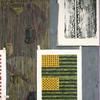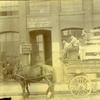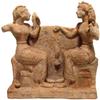Take A Virtual Tour Of 'All Is Possible,' First Retrospective of Pioneering Jewelry Designer Mary Ann Scherr
- January 25, 2021 10:52
Gregg Museum of Art & Design at North Carolina State University presented All is Possible: Mary Ann Scherr’s Legacy in Metal, the first retrospective devoted to jewerly designer Mary Ann Scherr, which was on view to Dec. 23, 2020. See highlights in this virtual tour of the galleries.
All is Possible: Mary Ann Scherr’s Legacy in Metal is a tribute to a larger-than-life designer who influenced the metal and design communities for over 6 decades. The exhibition title communicates her zest for life, as well as the many creative possibilities she saw in metal design, leading to a decades-long career in the field. When Scherr (Akron, OH 1921- Raleigh, NC 2016) moved from New York City to Raleigh in 1989, she was already an internationally renowned designer who had chaired the first Crafts Department at Parsons School of Design in Manhattan, innovated metal-etching techniques, and pioneered jewelry and accessories that also functioned as body monitors. And yet, for the next 30 years, she strived to enrich the arts and life of her new community in North Carolina, where she taught at decades at Penland School of Crafts, Duke University, Meredith College and finally, NC State University Crafts Center.
Curated by jewelry historian and educator Ana Estrades, the exhibition aims to explore the full extent of Mary Ann Scherr’s legacy, endless creativity, and innovations through new archival material, works from private collections, and recent oral histories taken from relatives, friends, collectors, former students, and studio assistants. Estrades visited the Parsons School archives containing documentation during her time as Chair of the Crafts Department at Parsons (1979-1989). Estrades also met with Sherr’s relatives, friends, collectors, former students, and studio assistants, with the ultimate goal of making a short documentary that includes details of her early life and career, and chronicling Mary Ann’s legacy beyond her physical pieces, especially as a teacher of metals for several decades.
The exhibition contextualizes Mary Ann’s early career in industrial design, illustration and fashion during the 1940s-1950s, and special highlights in the form of larger pieces in metal (eg. academic medallions for NC State and Meredith, four aluminum mythological figures and body monitors). Scherr’s range of jewelry design will also be exhibited, including chokers/ necklaces and cuffs/ bracelets; titanium work; and smaller pieces/ personal commissions. Many pieces which are currently in private hands will be exhibited for the first time.
“Jewelry has suffered long enough from being labeled as fashion accessory and limited to the body adornment category,” says Estrades. “As a jewelry historian, I see more dimensions to jewelry and want to invite museum visitors to explore its full complexity, as a work of art, collectible, meaningful design, personal expression, cultural object, historical artifact, social identifier, and so on.”
View the exhibition.




















